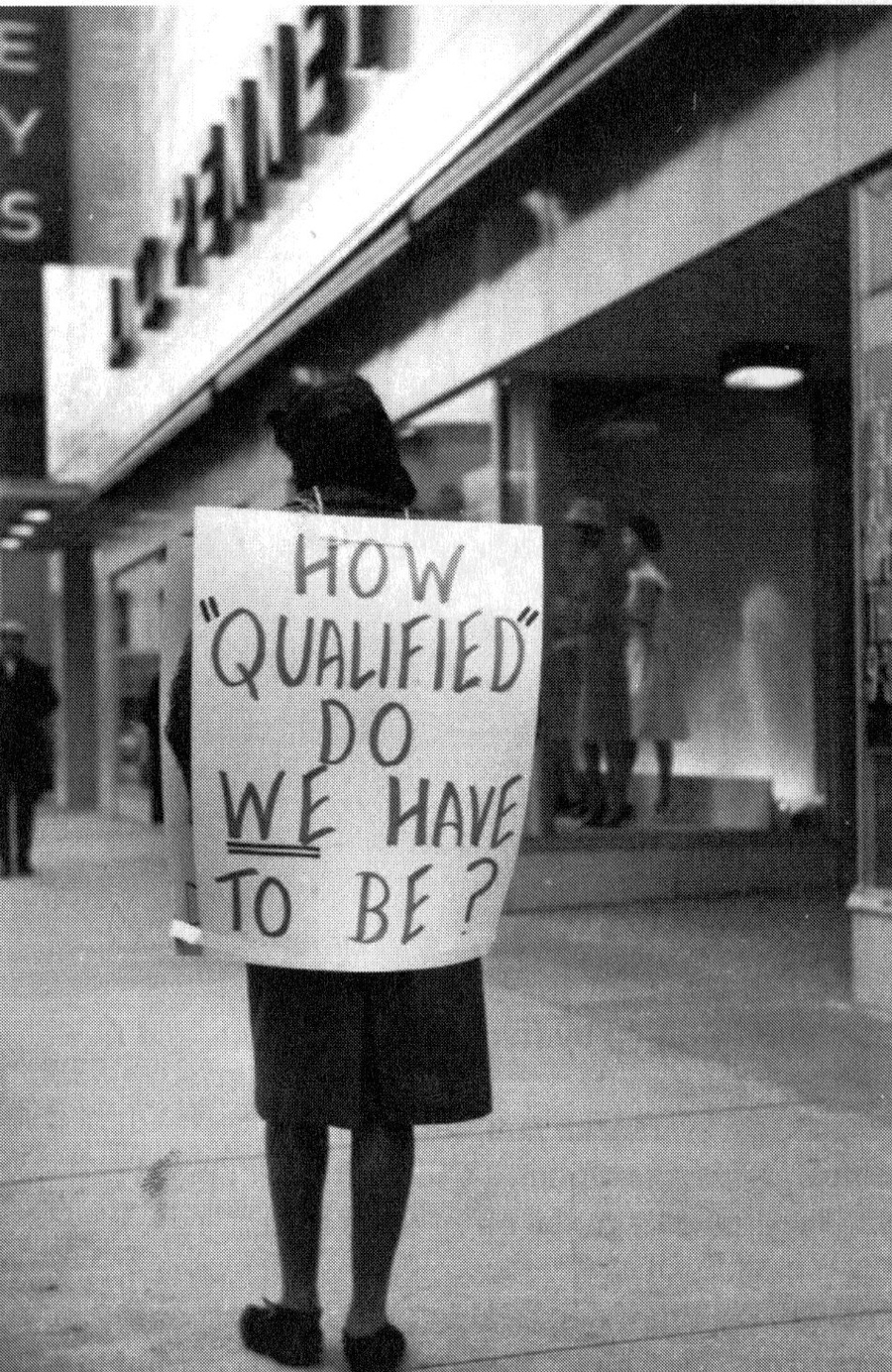The J.C. Penney Boycott and Picketing Campaign
15 E. Main Street, Champaign, IL
During the 1950s and 1960s, African Americans fought for equal opportunity in employment across the nation. In Champaign-Urbana, the Champaign-Urbana Improvement Association (CUIA) was founded to demand greater job opportunities for African Americans, resulting in one of the most influential local civil rights victories known as the J.C. Penney Boycott.
A Penney’s department store was planned for 15 E. Main Street in downtown Champaign and scheduled to open on April 6, 1961. Local Black ministers encouraged members of their congregations to apply for salesclerk positions that were advertised. Several Black women applied for the positions, including the wife of a Chanute Air Base employee with ten years’ experience. All were denied employment. It was found that Penney’s was only hiring African Americans for the stockroom and janitorial capacities. This information resulted in organized, collective action on the part of the Black community. The protest was planned under leadership of Rev. J.E. Graves of Mt. Olive Missionary Baptist Church, president of the CUIA. Rev. Graves called a meeting of ministers and lay people on March 22, 1961, at Bethel A.M.E. Church, to map out a plan of action. Over one hundred community members responded. Ministers took the leadership because their positions were less vulnerable to retribution.
Picketing, organized by community members Mary Alexander and George Pope, began on opening day. African Americans and others sympathetic to the cause were asked to boycott the store. Meanwhile the CUIA began training potential job applicants in interview techniques. At the end of three weeks, on April 25th, with the assistance of lone Black city council member Kenneth Stratton, an agreement was reached that successfully impacted hiring in all department stores in the community. The Council for Community Integration called it a “magnificent undertaking.”
The J.C. Penney Boycott and Picketing Campaign, and the dedicated men and women who participated, are remembered today for standing up to discriminatory employment practices.
This trail stop is sponsored by:
References
Alexander, Mary and Winston, Kathleen Johnson. (Spring 1996). “Reflections on Life, Part 2.” Through the Years: African-American History in Champaign County. Museum of the Grand Prairie. https://eblackcu.net/years/MA.htm
Lenstra, N. (December 11, 2012) Penney Picketing Campaign. https://localwiki.org/cu/PenneyPicketing_Campaign
Urbana School District #116. https://www.usd116.org/ProfDev/AHTC/lessons/Burrus10/penneysarticles_red.pdf.
- “Negroes Tell Why They Picket; Rap Penney’s for Discriminating”
- “Penney Manager Announces Cease of 3 Week Picketing”
- “Topic: The J.C. Penney Co. Affair” ( Memo dated April 25, 1961)
People:
- George Pope
- Mary Alexander
- Rev. J.E. Graves
Location(s):
- Champaign, Illinois
Additional Champaign Trail Sites



